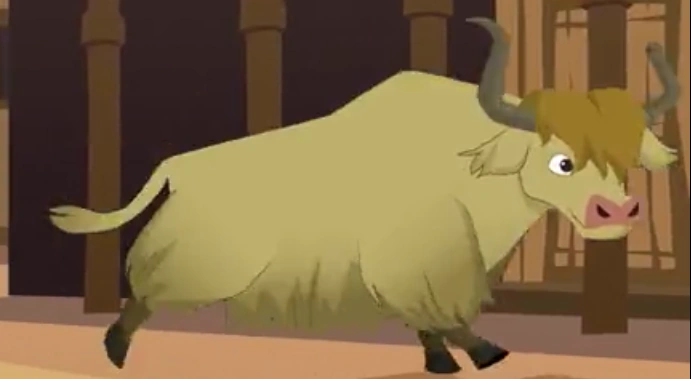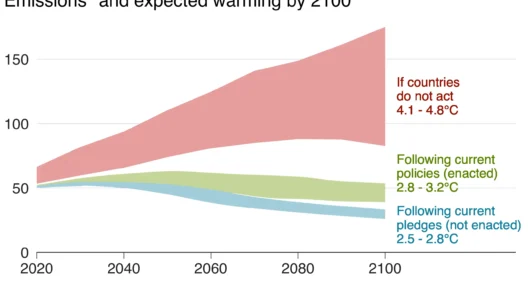Yaks, those tufted giants of the Himalayan region, are not merely iconic symbols of their rugged terrain; they are vital components of the ecosystems and cultures that flourish in these high-altitude biomes. As climate change accelerates, however, the future of yak populations hangs precariously in the balance. This article delves into the complex interplay between global warming and the fate of these remarkable animals, proposing a shift in perspective as we examine the broader implications for mountain ecosystems.
Historically, yaks have adapted to some of the harshest conditions on Earth. Their thick, long hair shields them from frigid temperatures that can plummet well below freezing. Their robust bodies thrive at altitudes exceeding 15,000 feet, where oxygen is scant and harsh weather is the norm. For centuries, these animals have been integral to the livelihood of local herders, providing not just meat and milk, but also serving as pack animals in the treacherous terrains of the Himalayas and Tibetan Plateau.
Yet, as global temperatures rise, these seemingly invincible mountain dwellers face unprecedented challenges. Climate warming alters the delicate balance of their habitat, impacting both their survival and the cultural practices of the communities that depend on them. To comprehend the scope of this crisis, one must first understand the unique traits that make yaks particularly susceptible to environmental change.
Yaks are not just any livestock; they are a keystone species in the high-altitude ecosystem. Their grazing habits influence the distribution of vegetation, while their manure enriches the soil, promoting plant growth. However, with altering precipitation patterns and diminishing snow cover due to climate change, the very grasslands that sustain yaks are undergoing transformation. In many regions, grasses that yaks rely on for sustenance are becoming scarce. This scarcity threatens to disrupt traditional pastoral practices, leading to food insecurity for both yaks and their human companions.
Moreover, the threat posed by rising temperatures is compounded by the increasing incidence of extreme weather events. Erratic rainfall and prolonged droughts can lead to forage shortages, pushing herders to migrate in search of more suitable pastures. This migration disrupts established migratory routes, thus complicating the delicate balance that sustains yak populations. Furthermore, as herders stretch their search for grazing lands, they may encroach on fragile alpine ecosystems, inadvertently causing irreversible damage.
The plight of yaks is further exacerbated by the phenomenon known as glacial retreat. The Himalayan glaciers, the primary source of water for countless rivers, are diminishing at an alarming rate. This loss directly impacts the water supply for both humans and animals alike. As streams and rivers dry up, the resulting water scarcity not only affects yak herders but also reverberates throughout the entire ecosystem, altering the landscape and threatening biodiversity.
In addition to the ecological repercussions, culture and tradition are also at risk. For many herding communities, yaks hold not just economic value but cultural significance. The rituals, folklore, and identity of these communities are intricately tied to the presence of yaks. As the animals face decline due to climate change, the cultural fabric that has survived for generations may begin to unravel. This loss calls for a re-evaluation of how societies value and interact with their natural environments.
Combating the challenges posed to yak populations requires a multifaceted approach. Adaptation strategies must be explored, including the implementation of sustainable grazing practices that safeguard both yaks and their habitats. These might involve rotational grazing to allow vegetation to recover or the reintroduction of traditional knowledge that has been sidelined by modern agricultural techniques.
Furthermore, climate resilience strategies must be integrated into conservation efforts. Supporting local herders through education and resources can empower communities to implement practices that not only preserve yaks but enhance their own livelihoods. Local conservation initiatives can play a pivotal role in preserving both yaks and their ecosystems, ensuring that herding communities navigate the challenges posed by climate change without sacrificing their heritage.
On a broader scale, it is imperative that global attention is directed toward the causes of climate change itself. Reducing carbon emissions, investing in renewable energy sources, and endorsing sustainable practices on a planetary level are all vital steps toward mitigating the impacts of global warming. Collective action is not merely beneficial; it is necessary for the preservation of countless species, including yaks, that are interwoven into the tapestry of our global ecosystem.
As we delve deeper into the odyssey of yaks, let us commit to a harmonious interplay between human activity and the natural world. The survival of yaks is a testament to the resilience of life, yet this narrative must evolve. The captivating relationship between yaks and their high-altitude homes is one that warrants protection, not only for the sake of these magnificent creatures but also for the myriad forms of life that share their environment. A shift in perspective is essential, as is the understanding that the fate of yaks is indelibly linked to the health of our planet and all its inhabitants.
In conclusion, the pressing need to address climate change transcends the immediate effects on yaks and extends to the larger ecosystems that encompass them. The consequences of inaction are profound and far-reaching; however, with conscientious effort and a commitment to sustainable practices, we can foster a future where yaks continue to roam the Himalayan heights. Embracing their plight ignites curiosity about our role in conservation and urges us to tread lightly upon this Earth.







